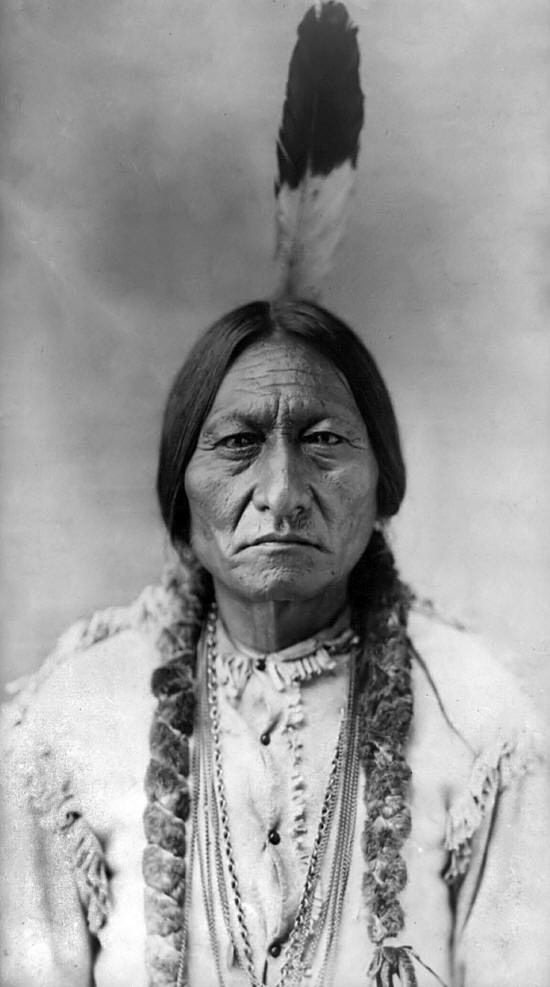 Ever since reading Sherman Alexie’s Flight last month, I’ve been on a self-directed Native American studies bender. I realized that my knowledge of Native American history was scant at best. We screwed over the Indians, gave them rotten blankets and broke a lot of treaties. But the depth of my knowledge stopped there. Flight opened my eyes to the injustice of the history and I was ready to dive in. Since then I’ve read Alexie’s short story collection, The Lone Ranger and Tonto Fistfight In Heaven, attended an inter-tribal Pow Wow in Simi Valley, and devoured the classic tome, Bury My Heart at Wounded Knee. Bury My Heart is essential reading, shining a thorough light on the American/Indian Wars and policy developments between 1860-1890. This history in this time period is absolutely sobering as the government continually steals land from the Indians, breaks up tribes, and tragically thins the ever-dwindling Indian population. The government breaks treaties, soldiers and settlers repeatedly provoke Indians, poach their reservation lands and when the Indians retaliate they are branded as aggressors, thus paving the way for more stringent government sanctions against the Indians. A vicious cycle to be sure. What was most eye-opening to me was the population disparity between the Americans and Indians. European immigration was so swift that ultimately the Indians never stood a chance. They were outnumbered on a grand scale and they knew it. The Old Chiefs knew they could never defeat the Americans. They were hopelessly outnumbered and outgunned. They might win some battles and skirmishes, but they knew a new flood of soldiers would simply replace the ones they killed. This realization would lead them to accept bad treaties, moving their tribes from their native lands to patches of the arid plains and deserts that the Americans had no interest in. Many of the older chiefs felt this was their only choice for survival. This would often cause tensions within the tribes as the Young Warriors would often chafe at these conditions and accuse their elders of giving up the fight. Also revelatory was the Indians' quest for peace and desire to find ways to live comfortably amongst the whites. The image of bloodthirsty, marauding Indians was a stereotype perhaps better suited to the soldiers and settlers trying to force the Indians from their lands than the tribes who were trying to find ways to stay out of the crossfire. Bury My Heart offers up tale after tale of the devastation to tribe after tribe, chief after chief. Heroes emerge, such as the great Sioux Warriors Sitting Bull and Crazy Horse. And villains emerge as well, first and foremost, Custer, who gets his at Little Bighorn, and Sherman whose charge takes a deadly toll.
Ever since reading Sherman Alexie’s Flight last month, I’ve been on a self-directed Native American studies bender. I realized that my knowledge of Native American history was scant at best. We screwed over the Indians, gave them rotten blankets and broke a lot of treaties. But the depth of my knowledge stopped there. Flight opened my eyes to the injustice of the history and I was ready to dive in. Since then I’ve read Alexie’s short story collection, The Lone Ranger and Tonto Fistfight In Heaven, attended an inter-tribal Pow Wow in Simi Valley, and devoured the classic tome, Bury My Heart at Wounded Knee. Bury My Heart is essential reading, shining a thorough light on the American/Indian Wars and policy developments between 1860-1890. This history in this time period is absolutely sobering as the government continually steals land from the Indians, breaks up tribes, and tragically thins the ever-dwindling Indian population. The government breaks treaties, soldiers and settlers repeatedly provoke Indians, poach their reservation lands and when the Indians retaliate they are branded as aggressors, thus paving the way for more stringent government sanctions against the Indians. A vicious cycle to be sure. What was most eye-opening to me was the population disparity between the Americans and Indians. European immigration was so swift that ultimately the Indians never stood a chance. They were outnumbered on a grand scale and they knew it. The Old Chiefs knew they could never defeat the Americans. They were hopelessly outnumbered and outgunned. They might win some battles and skirmishes, but they knew a new flood of soldiers would simply replace the ones they killed. This realization would lead them to accept bad treaties, moving their tribes from their native lands to patches of the arid plains and deserts that the Americans had no interest in. Many of the older chiefs felt this was their only choice for survival. This would often cause tensions within the tribes as the Young Warriors would often chafe at these conditions and accuse their elders of giving up the fight. Also revelatory was the Indians' quest for peace and desire to find ways to live comfortably amongst the whites. The image of bloodthirsty, marauding Indians was a stereotype perhaps better suited to the soldiers and settlers trying to force the Indians from their lands than the tribes who were trying to find ways to stay out of the crossfire. Bury My Heart offers up tale after tale of the devastation to tribe after tribe, chief after chief. Heroes emerge, such as the great Sioux Warriors Sitting Bull and Crazy Horse. And villains emerge as well, first and foremost, Custer, who gets his at Little Bighorn, and Sherman whose charge takes a deadly toll. My brain is a tad saturated right now and I’ve got to take a break from this line of study, but Little Big Man is on the pile, Life Among the Modocs has been recommended and I have tix to see Alexie speak in December.



No comments:
Post a Comment